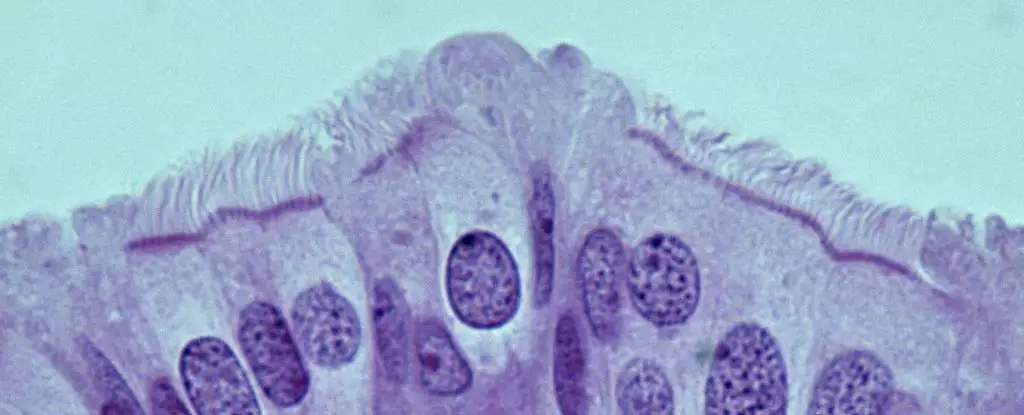Ovarian cancer is one of the most challenging malignancies faced by women, particularly high-grade serous ovarian carcinoma (HGSOC), which is notorious for its aggressive nature and high mortality rates. The survival rate for patients diagnosed with HGSOC can be alarmingly low, with many succumbing within five years of diagnosis. Research indicates that this type of cancer may not originate in the ovaries, as was traditionally thought, but rather in the fallopian tubes. This significant shift in understanding is crucial, as it opens avenues for early detection and improved treatment, potentially transforming the landscape of ovarian cancer care.
Recent studies led by a team at Cornell University, headed by pathologist Alexander Nikitin, delve deeper into the cellular dynamics that underpin HGSOC. The research focuses on identifying specific cell types in the oviducts of mice, with the hope that these findings will translate to human biology. Notably, the research provides a new perspective on the cells within the fallopian tubes that may be pivotal in the onset of HGSOC.
The team’s groundbreaking work reveals that the most cancer-susceptible cells in the mouse oviduct are pre-ciliated cells—transitional cells in the process of developing into ciliated ones. Unlike previous beliefs that stem cells in the ovaries might be involved in the onset of ovarian cancer, the focus is now shifted towards these pre-ciliated cells, which have shown a significant propensity for cancer development when coupled with certain genetic mutations linked to HGSOC.
The presence of specific genetic mutations appears to disrupt the normal functioning of these pre-ciliated cells, accelerating the cancer formation process. This discovery suggests a vital link between the mechanisms that govern cell differentiation in the oviducts and the emergence of ovarian cancer. Furthermore, the research indicates that abnormalities in cilia formation may not only be implicated in HGSOC but are also connected to other malignancies, such as pancreatic cancer, underscoring the far-reaching implications of these findings in oncology.
Implications for Early Detection and Treatment
Given the often asymptomatic nature of HGSOC, early detection remains a critical component in improving patient outcomes. Currently, most cases are diagnosed at advanced stages, when therapeutic options may be limited and less effective. By identifying the specific cells and genetic factors involved in the early stages of HGSOC, researchers are hopeful that new diagnostic markers can be developed. These markers could play a pivotal role in cascading down to transformative treatment strategies, enabling clinicians to intervene earlier in the disease process.
Moreover, understanding the exact cellular origins of HGSOC may stimulate innovative approaches to targeted therapies, providing patients with customized treatment options based on their genetic and cellular profiles. Such advancements could significantly enhance survival rates and quality of life for those battling this aggressive cancer type.
While the findings from Nikitin’s study provide a promising leap towards unraveling the complexities of HGSOC, they also pose further questions that necessitate continued exploration. Future research should aim to clarify the mechanisms by which genetic mutations influence the behavior of pre-ciliated cells and ascertain whether similar patterns are observed in human tissues. Additionally, studies must investigate other genetic mutations associated with HGSOC to fully delineate their effects and interactions with the identified cancer-prone cells.
The recent discoveries regarding the role of pre-ciliated cells in the oviduct highlight an exciting and potentially transformative shift in the understanding of ovarian cancer’s origins. With ongoing research efforts and collaboration among scientists, the hope for improving early detection and treatment of HGSOC looms larger, promising a brighter future for patients worldwide.


Leave a Reply